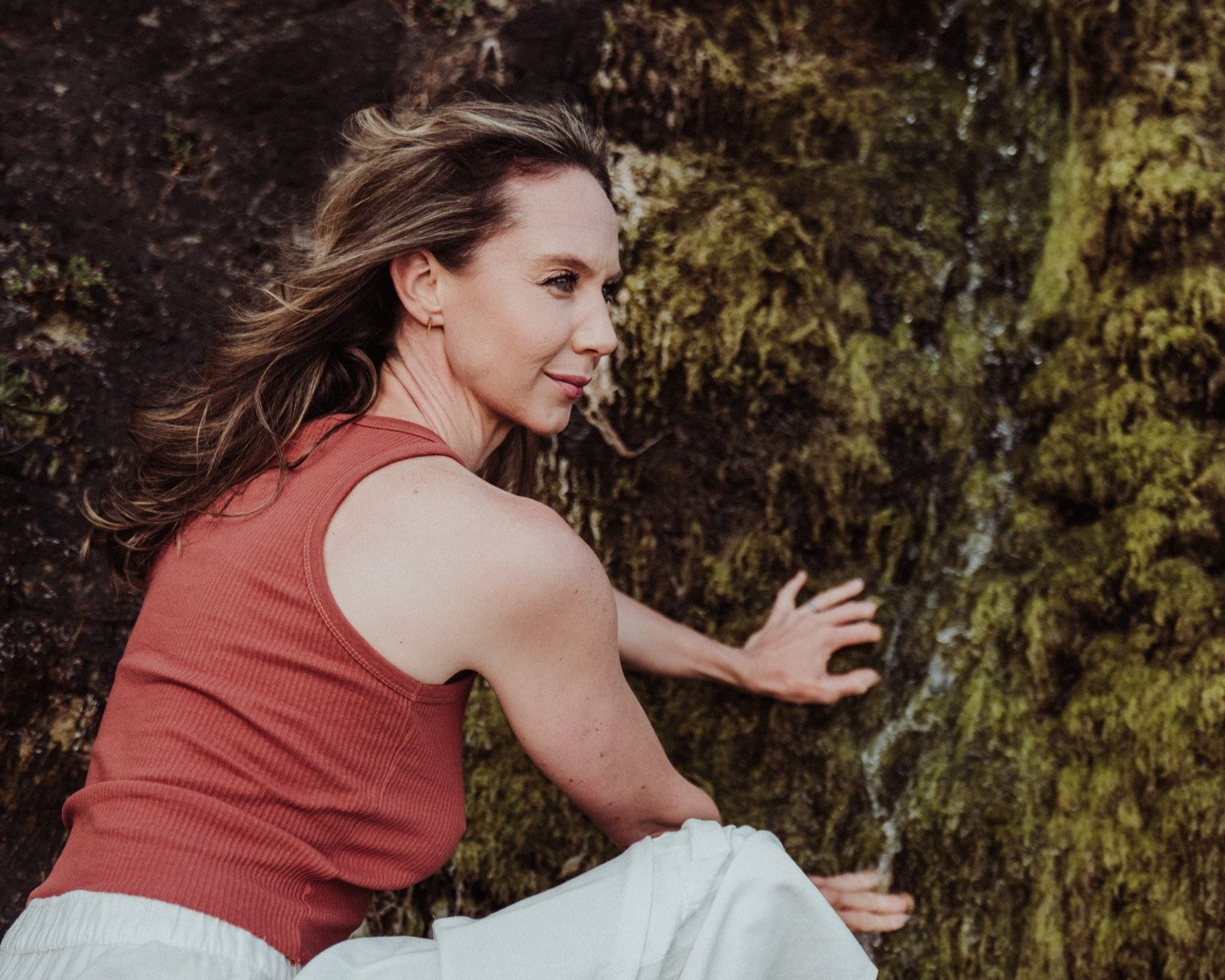What we forget about the female menstrual cycle, and why the Infradian Rhythm matters
Women-centred yoga acknowledges that being female requires a different approach to honour the uniqueness of female physiology. Alisa Vitti, functional nutritionist, writer and founder of FLOLiving, highlights in her body of work that hormonally, we are wired differently to males. Women are governed by the circadian rhythm, experienced by males and females, as well as the infradian rhythm, which is unique to females.
image | olivia calder
What is the Infradian Rhythm?
Vitti explains the infradian rhythm is a 28 day cycle that regulates the menstrual cycle, impacting our hormones, cognition, immunity, gut health, metabolism, responses to stress and reproductive health. The circadian rhythms are innate processes which affect behavioural, mental and physical changes and respond primarily to light and dark. This is a 24 hour cycle which affects many living things. If there is an imbalance with our circadian rhythm, it also can affect our infradian rhythm, and vice versa.
Living in accordance with the female infradian rhythm helps us break free from the linear and repetitive output of energy as experienced in those that follow the circadian rhythm only; this change also moves beyond the bind of patriarchal systems and society at large. Synching with our monthly cycle allows women to listen and respond to the constant flux of hormones, and adapt to modes of living and being necessary for women to live more harmoniously in body and mind. This means that we respond to individual needs and embrace the fact that every woman is unique.
What might this look like in yoga?
Sensitivity to our innate rhythms and cycles would see our yoga practice alter across different phases of our monthly cycle. Women who menstruate may move to the strength of the hormones at play, and energy experienced. Ideally, this pattern may be:
Menstruation (Day 1-5)
Energy at its lowest. Slow moving, grounding, meditative, yin-based practices, which nourishes the womb and pelvis. Refraining from inversions to support the downward flow of energy.Follicular (Day 6-12)
Energy building. Slow-moving, becoming more dynamic - perhaps starting with a grounding warm up and building into a more energised practice. This could be captured in one sequence, or perhaps a slow moving practice which becomes more dynamic the closer a woman moves towards ovulation. Twists and inversions encouraged to get the energy moving.Ovulation (13-16)
Energy at its peak. Stronger, more active practice. Unleashing the energy within that yearns to be expressed. Inversions, backbends, twists and balancing all to be explored.Luteal (Day 17-28)
Energy decreasing. Dynamic, becoming more slow-moving - perhaps starting with an energised practice, then winding down into a more grounded practice. This could be captured in one sequence, or perhaps a dynamic practice which becomes gradually more slow-moving as a woman moves towards menstruation. Balance may feel a little more challenging.
So many factors can affect our energy i.e. hormones, quality and amount of sleep, nutrition, stress, etc. This is a guide only, and should not dictate the way women move. Instead, it provides women with an opportunity to tune-in to their energy and move in a way that honours their needs.
The aim here is to help women find freedom in their movement practices and ultimately, to take this into life.
No menstrual cycle? No worries!
The lunar cycle is a beautiful way for women to move in rhythm with a monthly cycle. The lunar and menstrual cycles are closely aligned in duration, and have very similar timeframes for each phase. Women who follow the lunar cycle may align their movement as follows:
New moon = Menstruation
First quarter - Follicular
Full moon - Ovulation
Third quarter - Luteal
As some women’s menstrual cycle may not align with the lunar cycle, it’s important that they honour their energy and what feels best for them moment-to-moment, day-to-day. This in itself is living in accordance with the feminine.
Women who are perimenopausal may benefit from a practice that aligns with the lunar cycle as hormones may be less rhythmic and menstruation inconsistent. Aligning with the lunar cycle may provide some stability in movement and living according to a monthly rhythm.
Women who have reached menopause may feel less inclined to follow a lunar rhythm as they are liberated from monthly cycles. Instead, they may feel more attuned to the seasonal cycles, allowing the natural environment to guide their practices. Women who follow the seasons may align their movement as follows:
Winter/ New moon/ Menstruation
Spring/ First quarter/ Follicular
Summer/ Full moon/ Ovulation
Autumn/ Third quarter/ Luteal
If you are not perimenopausal, concerned as to why you may not be menstruating, or menstruating irregularly, I encourage you to speak with your doctor, or to see a Naturopath or Acupuncturist.
Here are a few local practitioners I would highly recommend:
Louisa Carter (Naturopath - Preston)
Michaela Rinkel (Acupuncturist - North Fitzroy and Richmond)
Jane Ditty (Acupuncturist - Brunswick)
References
Womancode: Perfect Your Cycle, Amplify Your Fertility, Supercharge Your Sex Drive, And Become A Power Source
In the Flo
Both by Alisa Vitti
Connect with me
Would you like to discuss ways to support you and your movement practices?
